Stone? Wood? Synthetic? Something else? In the not-too-distant past, choosing a premium countertop meant selecting a durable and beautiful natural stone. Recently, however, significant improvements in synthetic materials have led to a lengthening of the list of viable options, causing many homeowners’ heads to spin. To alleviate this burden, we’re pleased to share our top four countertop choices, and the benefits and drawbacks of each.
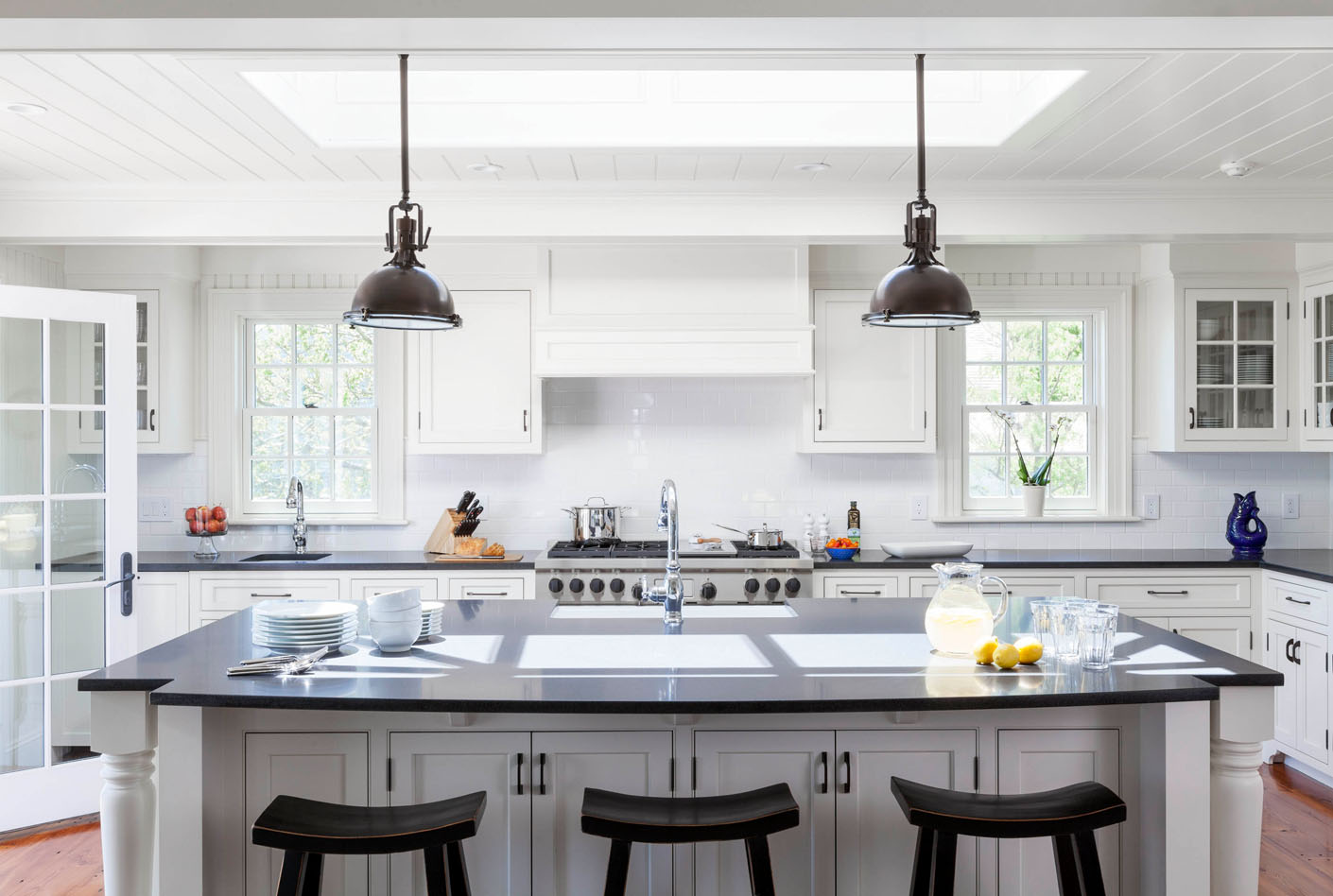
1. Marble
Perhaps the most specified countertop material in all of our work is honed carrara marble which provides an authentic, durable, timeless element within a working kitchen space. Originally from quarries in northern Italy, Ancient Rome’s Pantheon and Michaelangelo’s David are both composed of carrara. Prized for its white coloration with whisper-like grey veining, carrara will not overpower a room no matter how much real estate it occupies. It should be sealed and maintained annually to help prevent staining.
Pros: Indubitable timeless aesthetic.
Cons: Marble can be finicky. A porous natural material, it can stain easily and scorch, crack, or chip if heat or force are applied. Due to the widespread popularity of carrara, lesser-veined slabs are increasingly hard to find; speckled hues of grey are now often the norm, which some clients dislike.
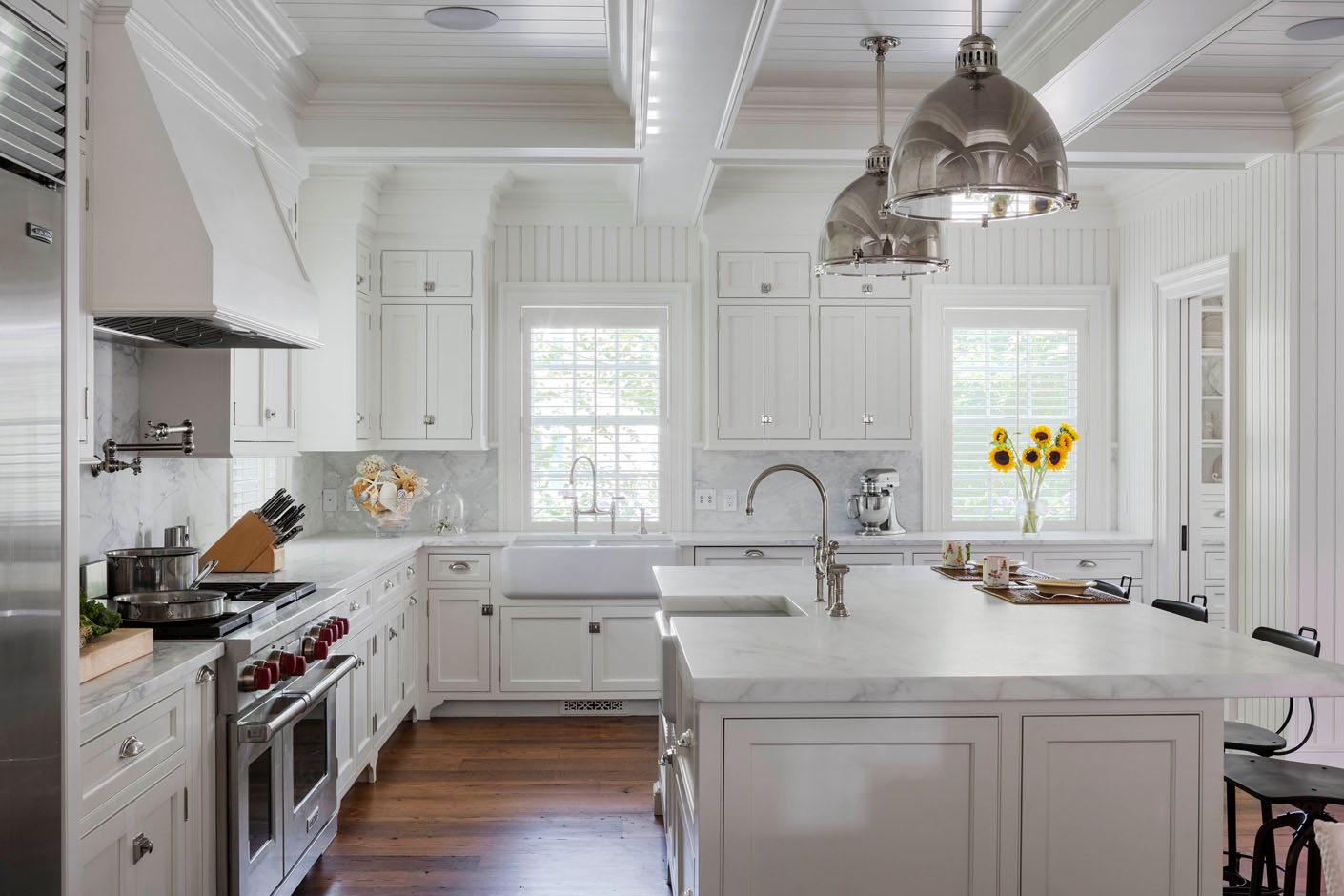
2. Granite
Once the reigning king of high-end kitchens, granite remains a popular countertop choice even as options expand. A hard natural stone, granite is mined from quarries then cut and polished to the desired finish. Stain-, scratch-, heat- and chemical-resistant, granite occurs in a wide array of color choices which play well with most kitchen schemes. Like marble, granite should be sealed annually to prevent oils, liquids, and bacteria from permeating the stone.
Pros: Unique natural beauty plus diamond-like durability.
Cons: Without proper sealing, stains can become nearly impossible to remove.
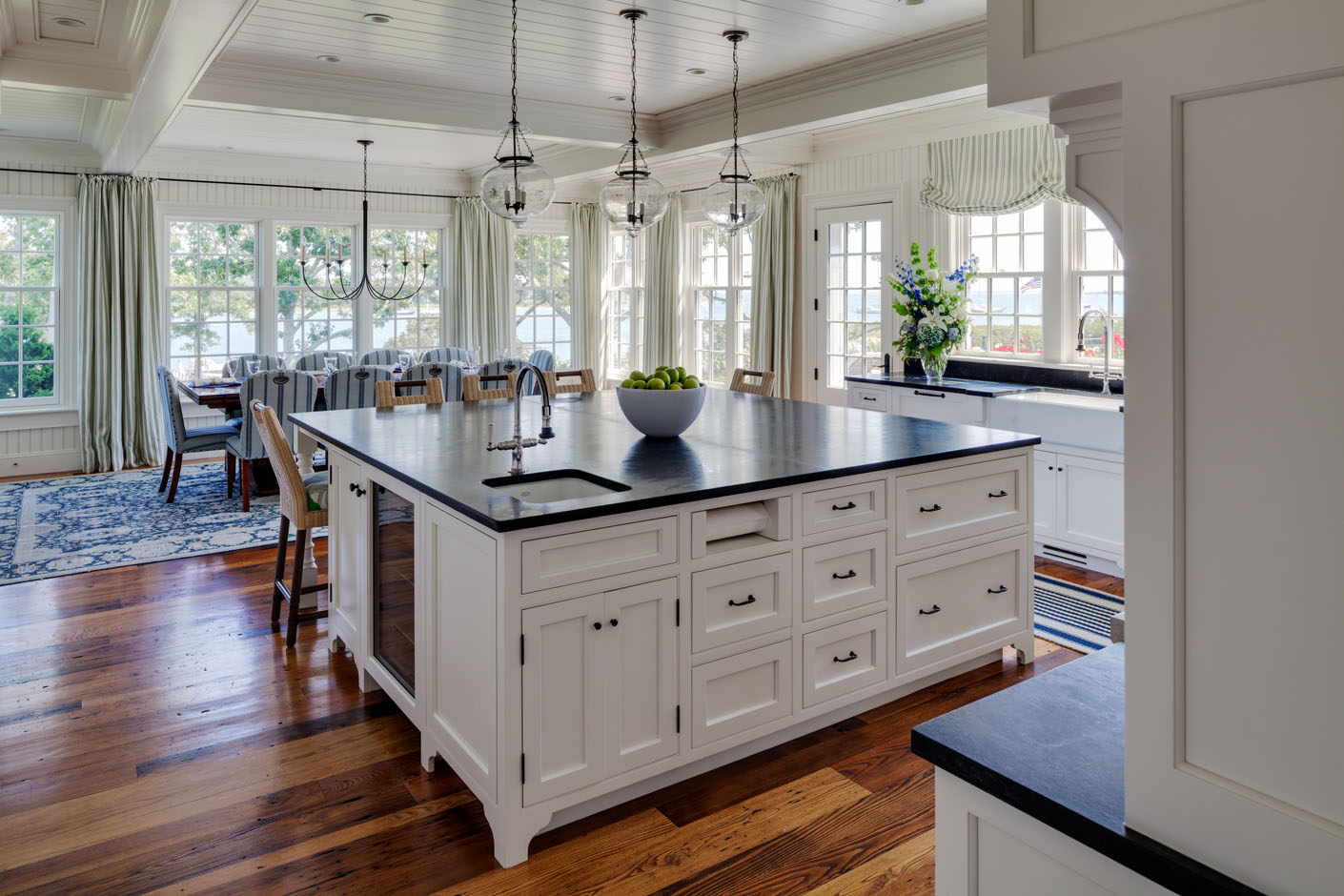
3. Wood
Wood counters have been used through the ages and were frequently seen in historic pantries where dishes and serveware were stored. Today, wood counters represent a timeless addition to wet bars, pantries, and kitchen islands, and can effortlessly warm and enhance the overall kitchen while complementing other materials in the room. Instead of butcher block, our preference is mahogany or walnut with a catalytic finish, which imparts a rich level of elegance and helps protect against heat, moisture, and scratches.
Pros: Imparts instant warmth; works well with other surfaces. Can be refinished if needed to renew the surface.
Cons: Wood is softer than stone, and will be more sensitive to dents, heat, and scratches than marble or granite.
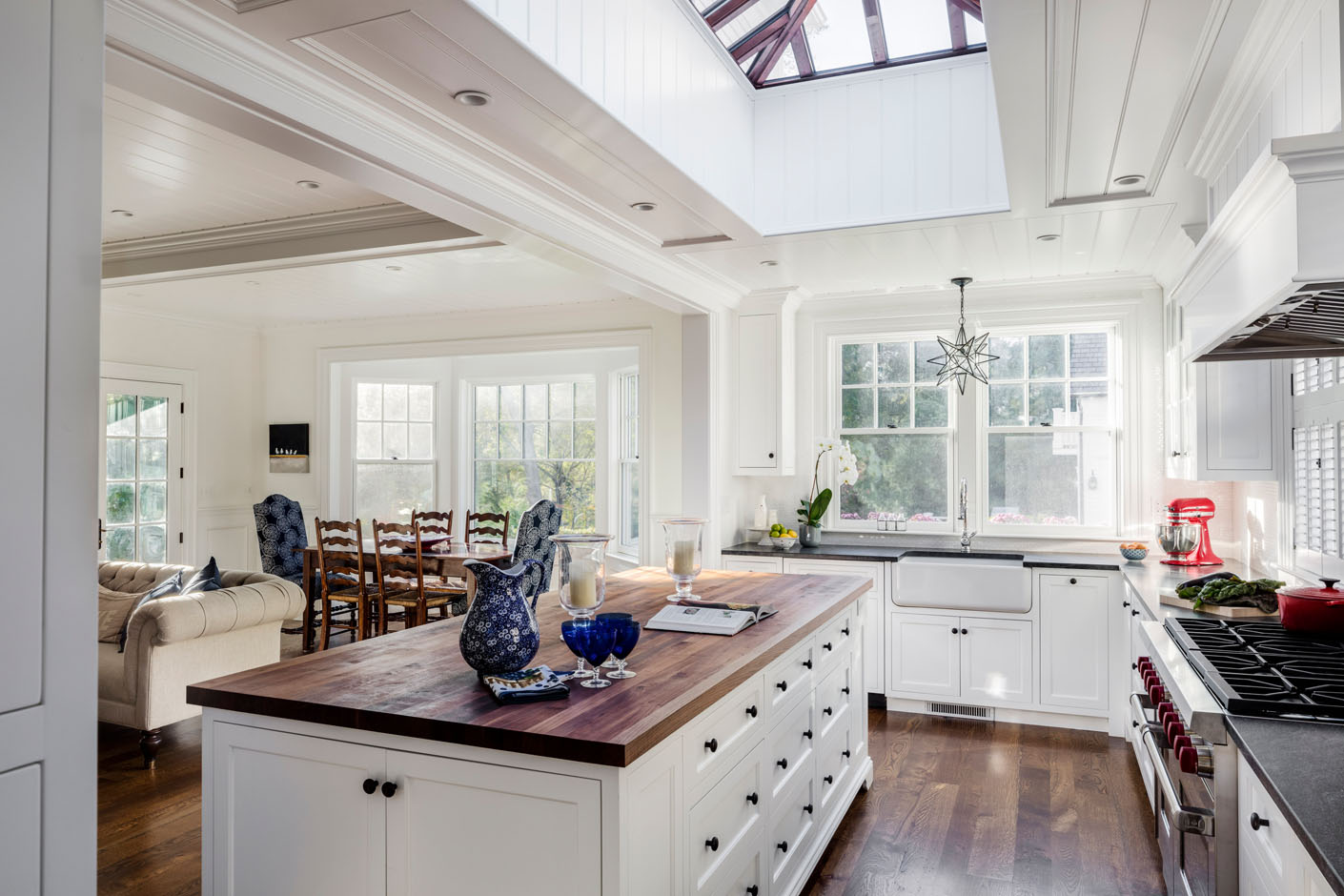
4. Quartz
Quartz represents an engineered stone that has become wildly popular due to its resilience, durability, and newly improved aesthetics. Comprised of crushed stone, polymer resin, and pigment, Quartz is arguably the new standard in kitchen counters. Popular brands including Cambria, Caesarstone, and Silestone all offer their own takes on this compound counter material, which is non-porous, harder than granite, and requires very little upkeep.
Pros: Less maintenance and better performance in a scratch- and impact-resistant material.
Cons: Can be sensitive to high heat – protection should be used beneath hot pans. Be careful to select a quartz counter that maintains an authentic aesthetic within a classically-inspired home.
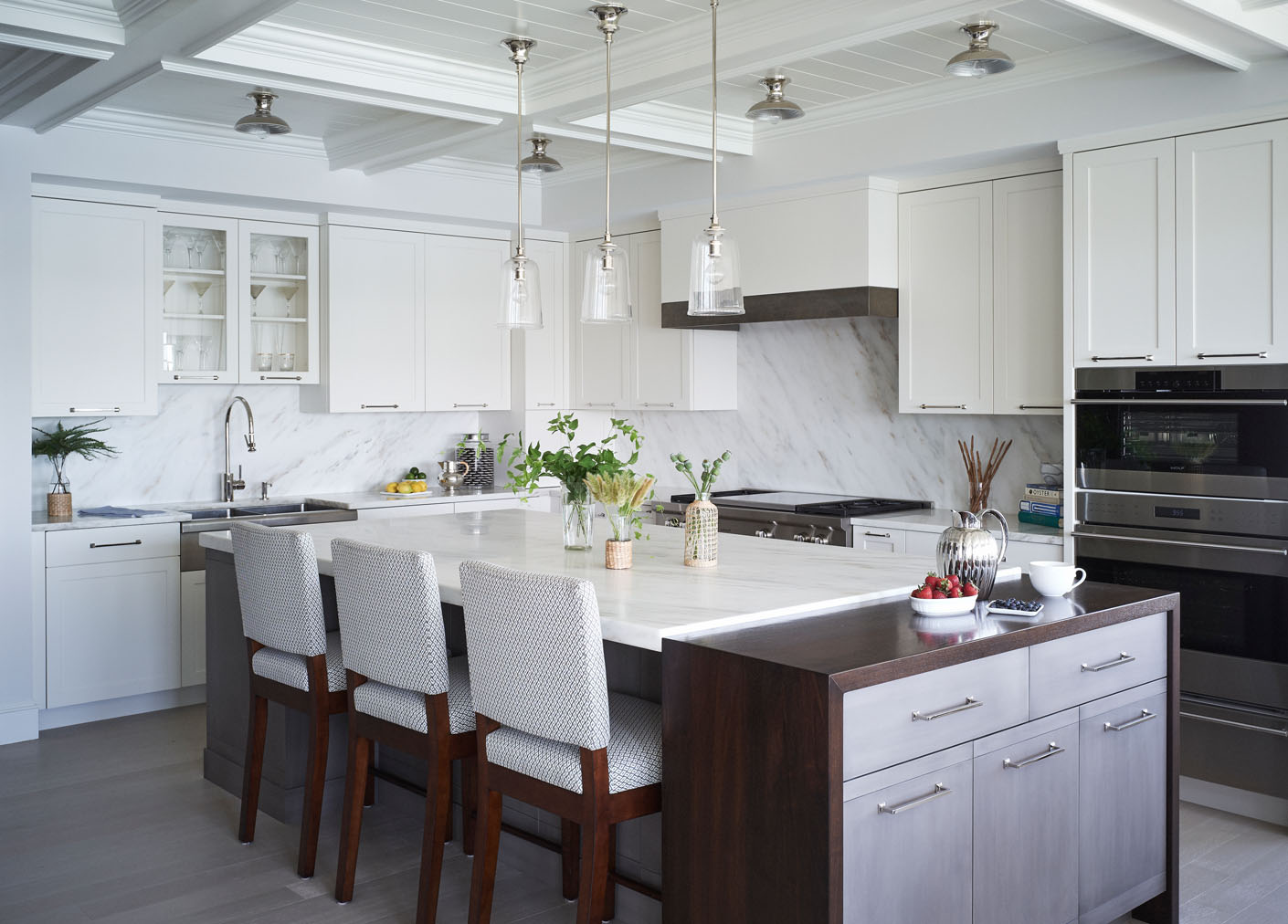
We hope that sharing our shortlist of countertop choices has helped simplify your selection process. For more inspiration, explore our portfolio or contact us to learn how we might approach your project.
Originally posted April 23rd, 2020.
Revised February 10th, 2022.
Next Blog Post
The Improved Kitchen ExperienceWith people pressed for time more than ever, creating efficiency in the kitchen is a key consideration for many of our clients. That means creating thoughtful kitchen storage and workspaces, as well as exploring faster—and healthier—cooking options.